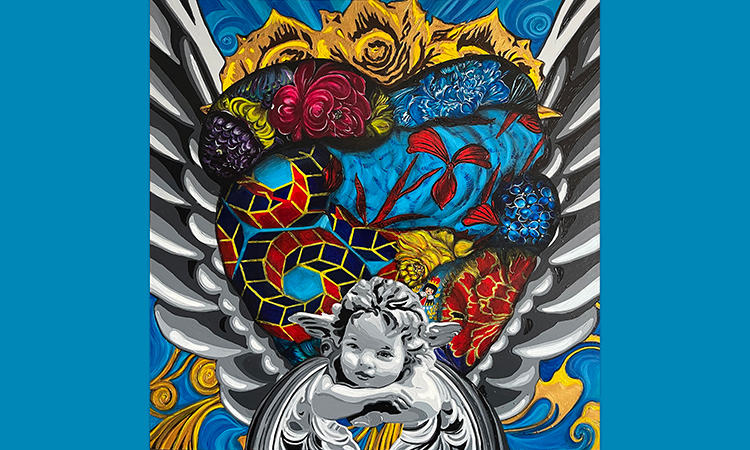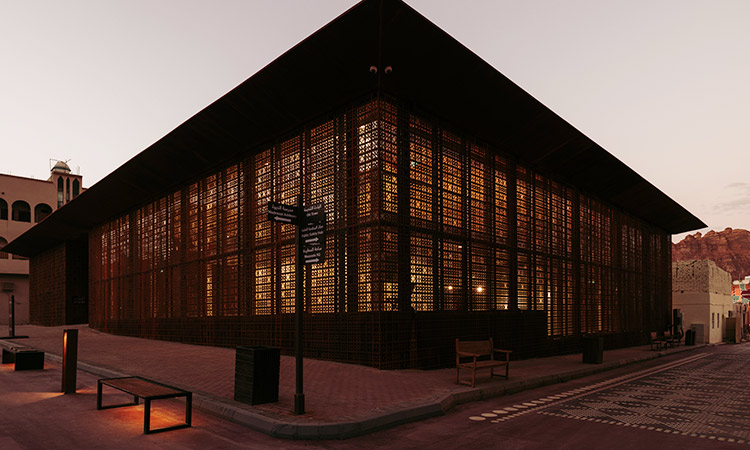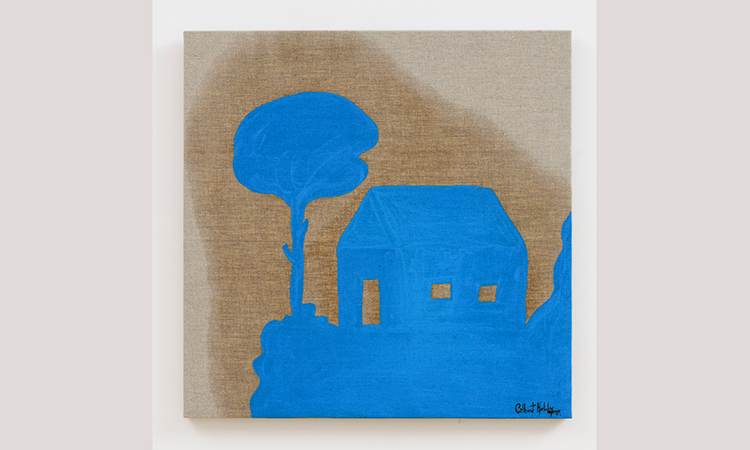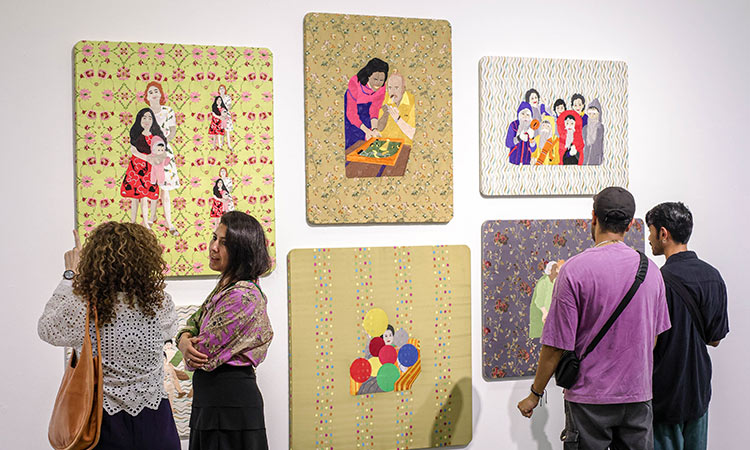For Lita Mathews, Art is ecotherapy for a planet damaged by excesses

This sculpture titled A Knight’s Tale uses eco-friendly materials.
Muhammad Yusuf, Features Writer
Lita Mathews, besides being a sculptor who uses recyclable materials in the interests of sustainability, is also an art tutor with teaching experience in arts education for children, teens and adults. She has been a member of Dubai International Art Centre (DIAC) for nearly a decade and half and is on the jury for drawing competitions hosted by Emirates Environmental Group. Craft workshops for ENOC Women Committee have been presented by her and she has conducted them for ENOC Women Committee exhibitions. Her close connection with art has continued with her career as a performance and jewellery artist. A regular participant in exhibitions held by DIAC members, her works have been shown during Art Dubai Season, Ramadan Season with Gallery 76, in Mercato Mall, Queen Elizabeth 2 Hotel and Skyline University College, Sharjah. She has been featured in art and craft presentations on regional TV screens such as those of Channel D & NTV, 24 News, Flowers, Amrita TV, Janam TV and Kerala’s leading daily, Manorama newspaper.
She has a background in Science which, she says, “validates my understanding of how and why Arts play a significant role in our lives. It inspires me to educate children on how to ignite their imagination and develop innovative ideas. My art sessions focus on Art that is integrated with Science. They aid students in understanding the world outside. My conceptual artworks and my creative skill crops up from the necessity to look for ecofriendly alternatives. All the recycling or upcycling will not solve our ecological problems; but they can create awareness. I enjoy the uncertainty and creative challenge of including/using a broken toy, an old picture frame or even an old T-Shirt to make it into an artifact that appeals to the aesthetic sense.”
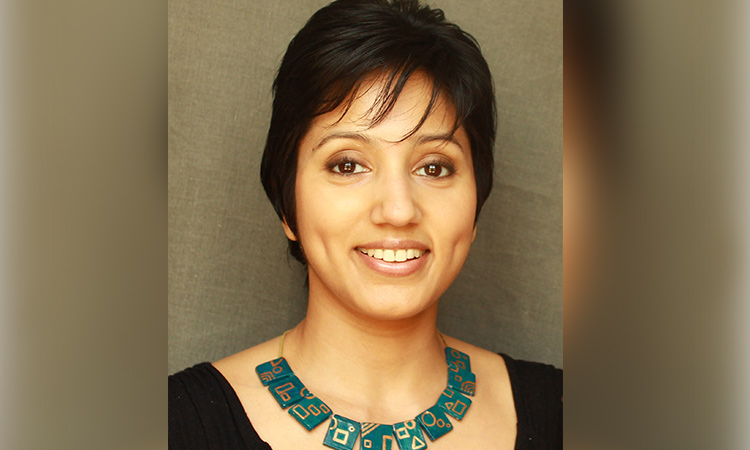
Lita Mathews presents her page-friendly answers to Gulf Today
What are the “unusual materials” you use in art making?
Tree twigs, old canvas frames, used clothes, broken jewellery, parts of kids’ toys, old shoes, cosmetic bottles, hardware/electronic waste, and packaging material.
What are your design inspirations as a jeweller?
I get most of my inspirations from fashion designs, colours, different cultures, architecture and Nature.
How can Art strengthen the cause of sustainability?
Using recyclable materials shows you that you don’t need brush and paints to put across your message. Further, creating an art or craft piece from waste, reminds us sharply of our use and throw culture. All the used or unused, intact or broken material could have been repaired been re-purposed! We cannot avoid using these products; but we can reduce what ends up in the landfill.
What are the qualities an art teacher should have?
To teach effectively, I believe you should first understand how we learn. I strive to develop teaching methods according to a child’s skill level. Allowance for mistakes, correcting them, encouraging them to take initiatives, adding changes to develop adaptation and building a sense of achievement that promotes self-confidence and self-awareness, are part of my “tool kit.” In a competitive classroom environment, perhaps the above are not encouraged. Learning in and through an art class helps one to recognise his/her strengths and weaknesses. This paves the way for major life decisions.
How can art spark the imagination and boost innovation, especially in children?
Art empowers you with the aesthetic dimension which supports independent thinking, creativity and collaboration. They are crucial qualities for developing a future that we cannot yet see. Most of us think creativity is limited to paints, brush and canvas. But for an experienced artist, it takes very good logical thinking, calculations and reasoning, to get a 3D object, for example, painted or drawn on a large flat surface. Art-integrated learning is experiential in nature and accesses many of the advanced processes of the human brain, such as intuitive analysis, expressivity and embodied cognition, which supports a child’s social-emotional development.
How does one integrate art and science?
The best example one sees art and science together is in Nature. In the man-made world, to make a sculpture, we need to know the chemical composition of the material, temperatures, shrinkage calculations, pigment reactions, etc. It is only within these parameters we can work to design the artwork. Look at the world’s tallest building, Burj Khalifa.
The structure is inspired by a flower called Spider lily. It took all the engineering sciences, environmental studies and understanding physical attributes of the building material, to make it stand tall, strong and beautiful. Same is the case with the cars we drive, or the gadgets we use in our daily lives. Magicians also integrate art with science. By learning science concepts through doing art, students understand the inter-relatedness of what they learn.
If you speak on “Why Arts?” what points will you highlight?
First, it’s a great stress buster. Physically, it reduces anxiety, gets your happy hormones going and strengthens immunity. Producing something with your own hands and at the same time using your brain, is a very rewarding and fulfilling experience. Creating art makes us feel more engaged and resilient. Children do better in their academic studies when they go to music or dance classes.
As a well-known Media personality, can you tell us how the Media can popularise art?
Media can highlight how and why Arts play a significant role in our lives by showing examples of people who experienced positive outcomes by being an artist or by learning art.
